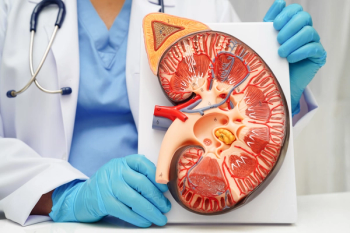
Metabolic Characteristic of Prostate Cancer May Lead to New Treatments
Hexosamine biosynthetic pathway could lead to potential treatments for certain prostate cancers.
A recent study revealed characteristics of castration resistant prostate cancer (CRPC), which could lead to new treatments for the disease.
Typically, removing androgen is the standard treatment for advanced prostate cancer. Although effective in the beginning, this therapy leads to a tumor becoming castration-resistant in most cases, according to a study published in Nature Communications.
"Using an innovative approach to integrate gene expression and metabolomics data, we identified key metabolic pathways that are altered in prostate cancer," said corresponding author Arun Sreekumar, PhD. "Of these metabolic pathways, the hexosamine biosynthetic pathway (HBP) showed significant alterations."
Researchers discovered that HBP is significantly less active in CRPC than it is in androgen-dependent prostate cancer. Having decreased HBP activity could potentially be linked to increased tumor growth, according to the study.
"When we experimentally knocked down genes involved in HBP in cells similar to CRPC tumor cells, the cells responded with a marked increase in proliferation, both in cell culture and animal experiments," Dr Sreekumar said. "When the cells with reduced HBP received UDP-N-acetylglucosamine, a product of this metabolic pathway they lacked, the cells slowed down their growth."
CRPC laboratory cells treated with UDP-N-acetylglucosamine and an anti-androgen (enzalutamide) were seen to have a reduction in proliferation. Researchers concluded that identifying HBP could be a possible therapeutic target to treat this lethal cancer.
"This result is particularly noteworthy because our cells were essentially resistant to enzalutamide alone," Dr Sreekumar said.
Newsletter
Stay informed on drug updates, treatment guidelines, and pharmacy practice trends—subscribe to Pharmacy Times for weekly clinical insights.
















































































































































































































